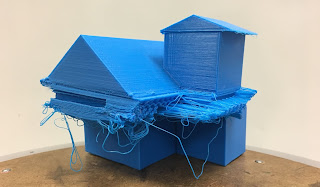For the past 100+ years, the traditional school system has been about suppressing innovation in favor of standardized knowledge. Students were the output of a system intended to "manufacture" factory workers. "Creative" workers were a problem in a system where every human component was supposed to be interchangeable. Creating learners who could grow independently was simply not part of the plan.
To many people, school is about preparing learners for "21st century jobs." Yet, there is no way that we can know what those jobs are. 10 years ago, I could not have described my job. It didn't exist. It is the heights of hubris and arrogance to think that we know what the jobs of 15 years from now will be.
So we take a different approach to learning here.
To many people, school is about preparing learners for "21st century jobs." Yet, there is no way that we can know what those jobs are. 10 years ago, I could not have described my job. It didn't exist. It is the heights of hubris and arrogance to think that we know what the jobs of 15 years from now will be.
 |
| Failed 3-D print. |
We can't reliably guess where our students will end-up. So we must provide them not only with the techniques to learn anything, but with the confidence that they can do anything.